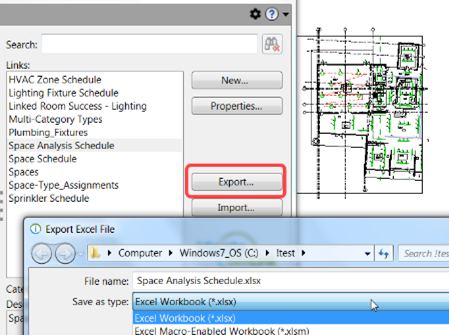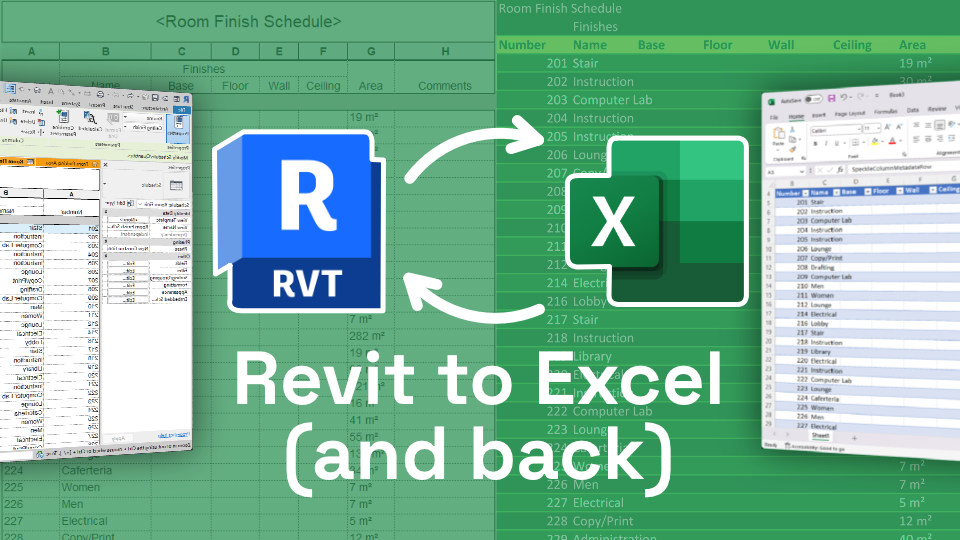Perfectly Import Excel into Revit: Increase Your Efficiency
Wiki Article
Excel Empowerment: Supercharge Your Revit Projects With Seamless Data Import
Are you aiming to supercharge your Revit tasks? With seamless information import, Excel empowerment can be the key to unlocking your task's complete capacity. Think of enhancing the import process and making best use of efficiency with seamless data integration. In this write-up, we will certainly share tips and tricks for using Master your Revit projects. Discover just how using the Excel-Revit connection can bring about success in your tasks. Get prepared to take your Revit jobs to the next degree with Excel empowerment.The Power of Excel in Revit Projects
You can supercharge your Revit projects by using the power of Excel for smooth data import. Excel is a functional tool that can substantially improve your operations and productivity in Revit (revit tools). With Excel, you can conveniently import and handle huge quantities of information, conserving you effort and timeOne of the crucial advantages of making use of Master Revit is its capacity to take care of complex estimations and formulas. You can make use of Excel to perform calculations on your information, such as creating quantities, computing prices, or assessing performance. This can be specifically useful when dealing with huge tasks that need comprehensive computations.

In enhancement, Excel gives a straightforward and familiar user interface for collaborating with information. You can arrange and adjust your data in a spread sheet layout, making it simple to see and modify. When working together with others or when you require to make quick modifications to your project data., this can be especially practical.
Furthermore, Excel allows you to easily import and export information in between Revit and various other software application applications. You can import information from external resources right into Revit, such as material requirements or tools schedules, and export information from Revit to Excel for more evaluation or reporting.
Streamlining Data Import With Excel in Revit
When using Excel as a device,Enhancing information import in Revit ends up being much easier. With Excel, you have the power to flawlessly import and manage huge amounts of information in your Revit projects. By making use of the acquainted interface and capability of Excel, you can save time and boost effectiveness in your operations.Among the vital benefits of utilizing Excel for information import in Revit is the capability to easily organize and manipulate information prior to importing it into your project. With Excel's powerful functions, such as sorting, filtering, and formulas, you can swiftly tidy up and style your data to meet the requirements of your Revit project.
Moreover, Excel enables you to import data from numerous sources, such as databases, spreadsheets, and even online applications. This versatility gives you the liberty to collect information from various platforms and combine it into one central area for simple accessibility and administration.
Additionally, Excel supplies the option to develop customized templates for information import in Revit. By developing layouts tailored to your job's certain requirements, you can make certain consistency and precision in your information import procedure.
Overall, utilizing Excel as a tool for data import in Revit streamlines the process and improves your efficiency. So why not make use of this effective device and supercharge your Revit tasks with seamless information import using Excel?
Making The Most Of Performance With Seamless Information Assimilation
Take full advantage of effectiveness by effortlessly integrating and handling information in your process. Gone are the days of manually inputting information into your system, losing priceless time and sources. With smooth information integration, you can simplify your processes and supercharge your Learn More performance.
Managing data ends up being a wind when you have a smooth assimilation system in location. You can easily organize and classify your information, making it much easier to get and examine. Bid farewell to the days of undergoing limitless spreadsheets for that one piece of details you need.

Excel Tips and Tricks for Revit Projects
In addition, you can utilize Excel to develop personalized layouts for data import and export. This method, you can guarantee consistency and accuracy when moving data in between Revit and Excel. On the whole, understanding these Excel methods and pointers will substantially improve your ability to take care of and adjust data in your Revit tasks.Using the Excel-Revit Link for Success
To maximize your Excel-Revit connection, take advantage of the capability to effortlessly move and integrate task details. By utilizing this effective connection, you can supercharge your Revit projects and improve your workflow. With just a couple of simple steps, you can import data from Excel directly right into Revit, conserving you time and making certain precision.Among the essential benefits of the Excel-Revit connection is the capacity to move information perfectly. Whether you are importing timetables, area information, and even geometry info, Excel gives a straightforward user interface that enables you to organize and manipulate your data prior to importing it into Revit. This means you can conveniently update and change your task information in Excel, and with a few clicks, move those modifications directly into your Revit design.
In enhancement to transferring information, the Excel-Revit link likewise enables for synchronization. This means that any kind of adjustments made in Excel can be automatically upgraded in Revit, making sure that your project information is always up to day. This synchronization function is especially valuable when managing complicated and big projects, as it eliminates the need for hand-operated information entrance and decreases the risk of mistakes.
Conclusion
So there you have it - the power of Excel in Revit jobs can not be taken too lightly. By streamlining information import and making best use of effectiveness via seamless data combination, you can supercharge your jobs and accomplish success. With the Excel-Revit connection, you have the devices to take your tasks to the next degree and attain remarkable results. So don't wait any kind of longer, start utilizing the power of Excel in your Revit projects today and unlock a world of opportunities.You try here can supercharge your Revit projects by harnessing the power of Excel for seamless data import. With Excel, you have the power to perfectly import and manage large quantities of information in your Revit jobs (revit plugins). On the whole, understanding these Excel pointers and methods will greatly enhance your capacity to handle and control data in your Revit jobs
Whether you are importing schedules, space information, or even geometry information, Excel gives an easy to use interface that enables you to organize and manipulate browse this site your information before importing it into Revit. By improving information import and making the most of effectiveness via smooth data assimilation, you can supercharge your jobs and attain success.
Report this wiki page